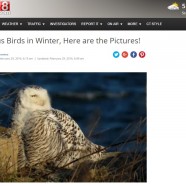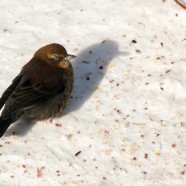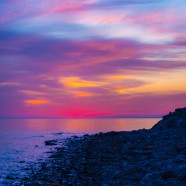Loch Ness Monster?
Loch Ness Monster? Ut oh, it’s surfacing, and it’s looking directly at me! Or maybe not…but close enough in look and unfortunately somewhat in status. Horned Grebes (Podiceps auritus) are listed on the International Union for the Conservation of Nature (IUCN) Red List of Threatened Species as “Vulnerable”. We often do not get to enjoy them close-up like these views I was afforded last week. While their wintering plumage is meant to camouflage them in the water, their piercing red eyes are a bright beacon on even the dullest of late winter days. Keep an eye out...
Read MoreWinter Birds Wrap-up
Here is a review of some of the great birds seen so far this winter in Connecticut: http://wtnh.com/2016/02/29/winter-birds-wrap-up/ Be sure to click on the “next page” buttons at the bottom to see all of the photos. This is our first post on WTNH.com. Please share so Audubon Connecticut and RTPI can make a big splash on the new platform!
Read MoreRusty Blackbird Blitz 2016
Citizen scientists – the 2016 Rusty Blackbird Spring Migration Blitz is coming to a state near you! I am the statewide Connecticut coordinator for the Rusty Blackbird Spring Migration Blitz, running from March through mid-June across the continent and focused in Connecticut from mid-March through April. This effort to save the one of the fastest declining once-common landbirds in North America needs your help. You can see more about the species in the below two-page informational document about the Rusty Blackbird (PDF downloadable here) and on the International Rusty Blackbird Working...
Read MoreLyme Disease Sign
Here is a terrific educational notice that I enjoyed seeing on the wall during a recent veterinarian visit with my dog. Using artwork created by children to help teach the public educates both the visitors and the children who are creating it. We use the same outreach techniques in the Audubon Alliance for Coastal Waterbirds with signs drawn by hundreds of school children which we then laminate and post on beaches and offshore islands to let beachgoers and boaters know there are endangered birds nesting in the area. We certainly see less damage to them than other more generic, bland and...
Read MoreFebruary Arrives
The transition from January into February is usually one without many colors, though this sunset on the final night of January was spectacular over the water. The pink glow from the sun below the horizon makes me think of everything from Valentine’s Day to the Northern Cardinal males beginning to sing in our yards on the warm and sunny days as they stake out their territories and sound out for mates, if they do not already have one. The same shade reminds me of the House Finch males that have also been calling out their cheery melodies frequently as of late. This January seemed to move...
Read More








